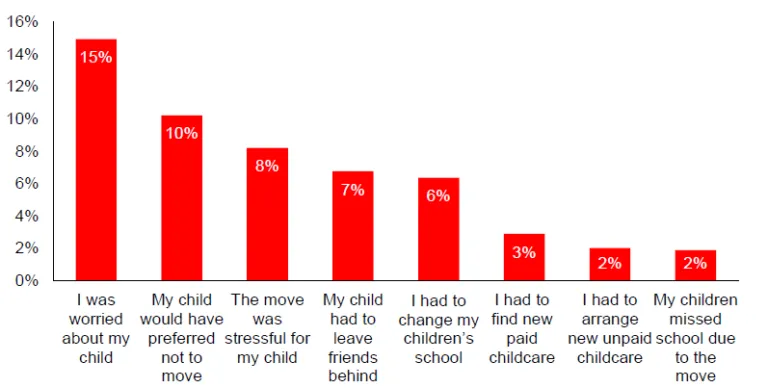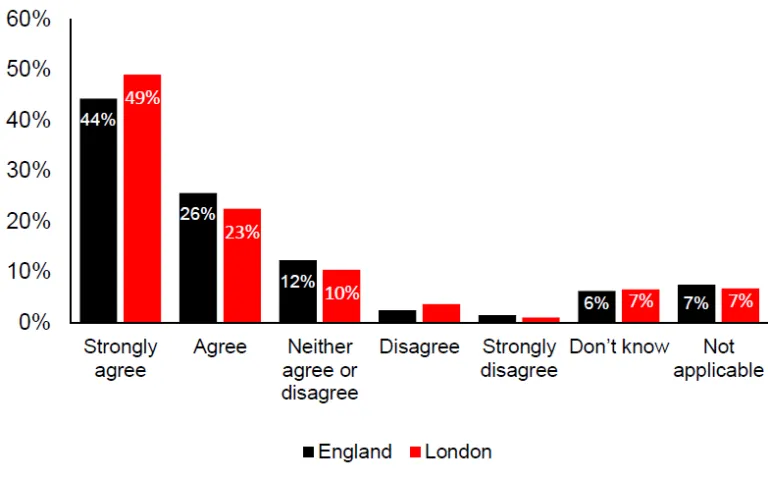Renting families move so often they are nearly nomadic – new research
Published: by John Bibby
Of all the things that need improvement in private renting, the one that is probably most undeservedly overlooked is how unstable it is: how often renters move. OK, it isn’t the sort of thing that leads to deaths, like electrical faults can. But it is a defining feature of being a renter in England that has wide-ranging damaging effects like putting them under financial strain, uprooting them from friends and family and increasing their commuter costs.
It’s particularly serious given the number of families with children that now rent, because moving regularly can have serious effects on kids, like making them move school.
We’ve published research today which sets out the facts on how bad this instability is in England. And the headlines are these: 1 in 4 private renters moved last year. That’s eight times more than the number of owners who moved and five times more than social renters.
Figure 1: Percentage of households who moved within their housing tenure in 2013/14

Source: English Housing Survey Household Report, 2013/14
As a result of this widespread instability, 29% of private renters have ended up moving three or more times in the last five years. In London that number rises to 37%.
The most direct consequence of this is the high cost moving imposes on renters. A majority of tenants are forced to pay costs that can run into several hundred pounds, and a quarter say that their last move strained their finances. Being forced to move frequently means being forced to pay more often. So cutting down the number of times that renters were forced to move would have a direct positive effect on their finances.
But aside from the moving costs, you might think that moving three or more times in five years doesn’t sound too bad for people who are young and mobile, like students who have just left home. These are the people who are still often seen as the typical private renters. This ignores the fact that millions of families with children now live in the private rented sector. In fact, a quarter of all families with a kid now live in the private rented sector, which is up from 1 in 10 a decade ago, and renting for them is almost as unstable as it is for everyone else.
27% of private renters with children have moved three or more times in the last five years. If you have a child that frequency of moving is practically nomadic. It makes it almost impossible to give them somewhere that they will be able to think of as their childhood or family home.
What’s more, our research shows that moving so often has a direct and tangible negative impact on the children of renting families, including on their education.
Figure 2: the impact felt by children in renting families the last time they moved

Source: YouGov for Shelter, base: English private renters with children in the household: 746. Survey conducted between 22nd June and 13th July 2015
With 6% of private renters saying that they had to move their child’s school the last time they moved home, that means that 65,000 families have had to do disrupt their child’s education and settle into a new primary or secondary school. Research shows that frequent moves like this can have a very serious effect on their educational outcomes.
So although instability is overlooked it has far-reaching consequences. The good news is that there is something that can be done about it.
Across the rest of Western Europe it is the norm for renters who move into a home to know that they have the legal right to stay there for the long-term (see table 1 below). This would be possible to here, but English law still has to play catch-up with the growing number of families who rent. And this is something that people are beginning to talk about. Just today, the Centre for Social Justice is also publishing a report suggesting that security of tenure should be increased in the private rented sector.
Table 1: security of tenure in comparable European countries
| Length of lease | |||
| 1 year or less | 5 years or less | Indefinite | |
| Denmark | ● | ||
| England | ● | ||
| Finland | ● | ||
| France | ● | ||
| Germany | ● | ||
| Netherlands | ● | ||
| Norway | ● | ||
| Republic of Ireland | ● | ||
| Spain | ● | ||
| Sweden | ● | ||
| Switzerland | ● | ||
Source: The Private Rented Sector in the New Century: a comparative approach, University of Cambridge, 2012
Given all of this, it probably comes as no surprise that renters overwhelmingly support this change as well. Over 90% of renting families say that they are looking for a private rented home for the long-term and 7 in 10 renters say that introducing something like Shelter’s long-term Stable Rental Contract would improve renting for them or their children.
Figure 3: “Having a tenancy that lasts for 3 or 5 years, with predictable rents, which I could get out of with 2 months’ notice would improve renting for me/ my child(ren)”

Source: YouGov for Shelter, base: English private renters: 3792. Survey conducted between 22nd June and 13th July 2015
Unstable, nearly nomadic renting is a defining feature of the English private rented sector. It has a massive impact on renters, particularly families, but it doesn’t need to be like this. The time has come for English law to catch-up with other countries where renting for families is the norm. Renting can be better; so let’s fix it.